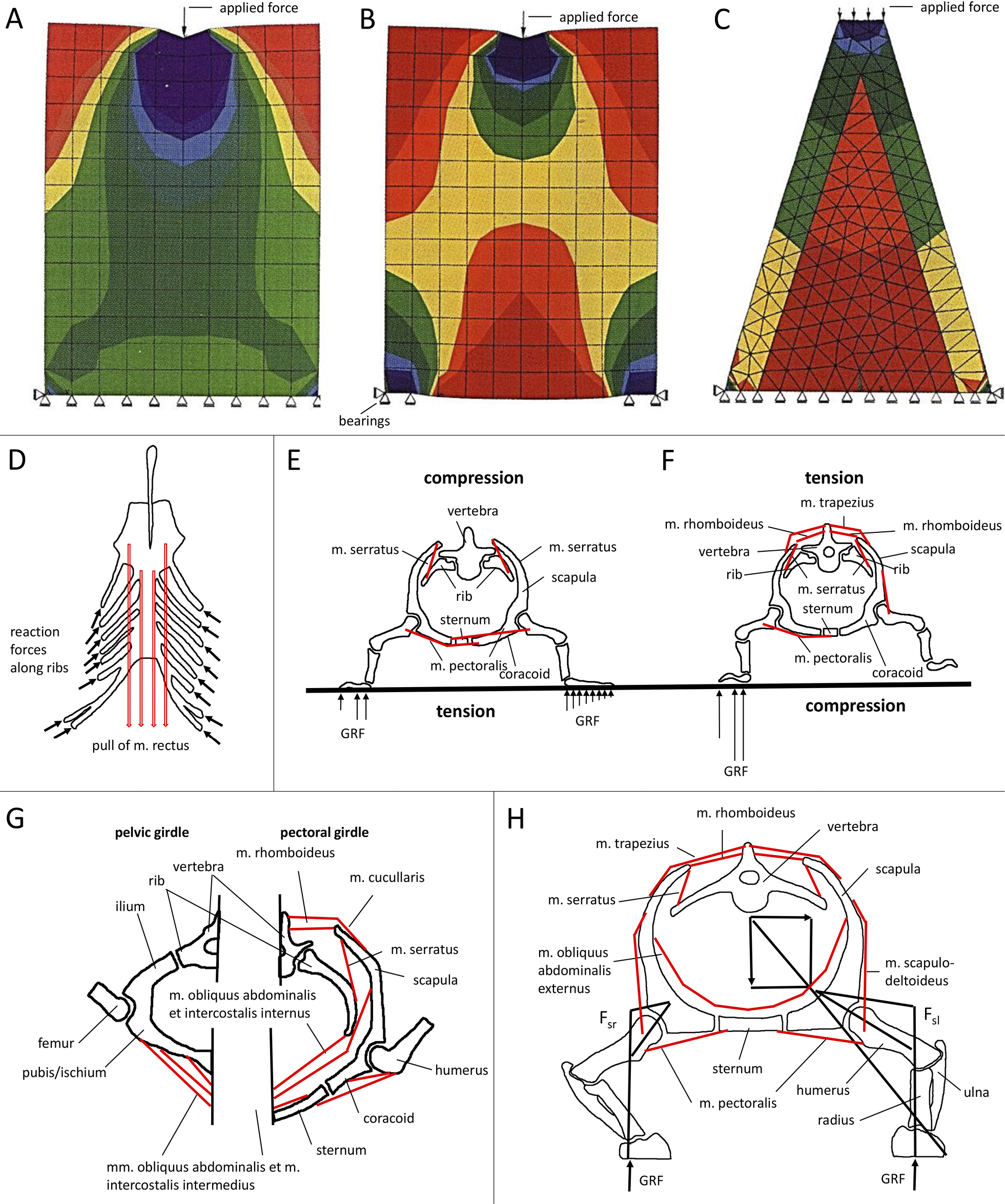
|
||
|
A–D Sternum and rib angle in ventral view. Sternum, curvature of cartilaginous ribs, and rib angle in ventral view. D Morphology of the region in a crocodile as example. The black arrows indicate the direction of acting forces, not their sizes (changed and redrawn after Preuschoft 2022). A finite element structure analysis of a (weightless) plate, pushed by an external force (equivalent to the m. rectus abdominis) downward. Although the entire lower margin is available for transmission of this force, stresses tend to concentrate at both corners. B If the bearings along the lower margin are eliminated, this concentration becomes more pronounced, while the middle remains completely stress-free. C Following the yellow and green areas in (C), a new plate is created, and its most stressed parts are reinforced: Now the stressed parts deviate to both sides (forming the rib angle), and stresses become smaller downward (thinner ribs, longer cartilaginous parts). E–G Loading regime of the body stem in cross sections. E and F show the pectoral girdle, but in the pelvic girdle the same stress patterns occur. Loading depends upon the state of postural behavior: E If an animal is resting on both, fore- or hindlimbs, the lower part of the trunk is loaded by tensile stress and on its dorsal side by compressive stress (changed and redrawn after Hohn et al. 2013). F If one foot is lifted off the ground, the dorsal trunk is loaded by tensile stress and the ventral trunk as well as the remaining three legs by compressive stress (changed and redrawn after Hohn et al. 2013). G Left side pelvic girdle, right side pectoral girdle. The pelvic girdle as well as the pectoral girdle of reptiles and mammals are designed as ring-like structures (changed and redrawn after Preuschoft 2022). H Sketched frontal view of a tetrapod. Body cavity is suspended by muscles (red lines) from the most dorsal part of the shoulder girdle. Both limbs are sprawled but in a different way: on the left side with adducted, on the right side with a vertical zeugopodium. Accordingly, the ground reaction force (GRF) (upward directed black arrows) exerts different joint moments balanced by muscles. If the head moves to the left, the movement is opposed by the mass inertia, so the black arrow points to the right. In combination with the weight of the head (vertical black arrow) to a resultant, which reaches the ground within the field covered by the sprawled feet. A position is shown, in which the resultant just reaches the external margin of the left foot (changed and redrawn after Preuschoft 2022). |